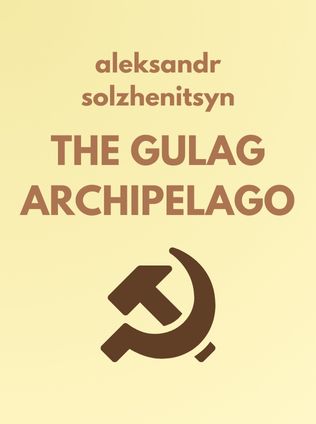
The Gulag Archipelago
By Aleksandr Solzhenitsyn
Published 01/1973
About the Author
Aleksandr Solzhenitsyn was a Russian novelist, historian, and outspoken critic of the Soviet Union, particularly its totalitarian regime and the gulag system of labor camps. Born in 1918, Solzhenitsyn lived through some of the most tumultuous periods in Russian history, including World War II, Stalin’s purges, and the oppressive rule of the Soviet state. His works, particularly The Gulag Archipelago, brought global attention to the horrific realities of the Soviet prison system and earned him the Nobel Prize in Literature in 1970.
Solzhenitsyn’s experiences as a soldier in the Red Army during World War II and his subsequent imprisonment in a gulag for criticizing Joseph Stalin in a private letter to a friend deeply influenced his writing. He spent eight years in various labor camps, followed by internal exile, and these experiences form the basis of his most famous work, The Gulag Archipelago. This book, written in secret and published abroad, is a monumental account of the gulag system and an indictment of the Soviet government’s abuses of power.
Main Idea
The Gulag Archipelago is a comprehensive and harrowing exploration of the Soviet Union's system of forced labor camps, known as gulags. Solzhenitsyn argues that these camps were not merely prisons but were integral to the Soviet state's mechanism of control, serving as tools of mass violence, exploitation, and psychological manipulation. The book reveals how the Soviet government used the gulags to instill fear, maintain power, and crush any form of dissent or resistance. Through personal anecdotes, accounts from other prisoners, and historical analysis, Solzhenitsyn portrays the gulag system as a monstrous machine designed to break the human spirit and enforce the totalitarian rule.
Table of Contents
- The Gulags Served as Death Camps
- The State Brainwashed Its Citizens
- The State Conditioned Its Citizens Not to Care for Each Other
- Authority Figures Were Conditioned to Abuse Prisoners
The Gulags Served as Death Camps
The gulag system, as described by Solzhenitsyn, was designed not just to imprison but to destroy. The camps were scattered across the harshest and most remote regions of the Soviet Union, particularly in Siberia, where the climate alone was a formidable adversary. Prisoners were subjected to grueling labor, often in the mining or logging industries, where they worked for up to 14 hours a day under the most brutal conditions.
Solzhenitsyn compares the gulags to Nazi concentration camps, though he clarifies that the Soviet system was not aimed at genocide in the traditional sense. Instead, the goal was to eliminate dissent and utilize the imprisoned population as a disposable labor force. The camps were "death camps" in all but name, where prisoners were worked to death, starved, and exposed to the elements with minimal clothing or shelter.
Sign up for FREE and get access to 1,400+ books summaries.
You May Also Like
I Am Malala
The Story of the Girl Who Stood Up for Education and Was Shot by the Taliban
By Malala Yousafzai



















